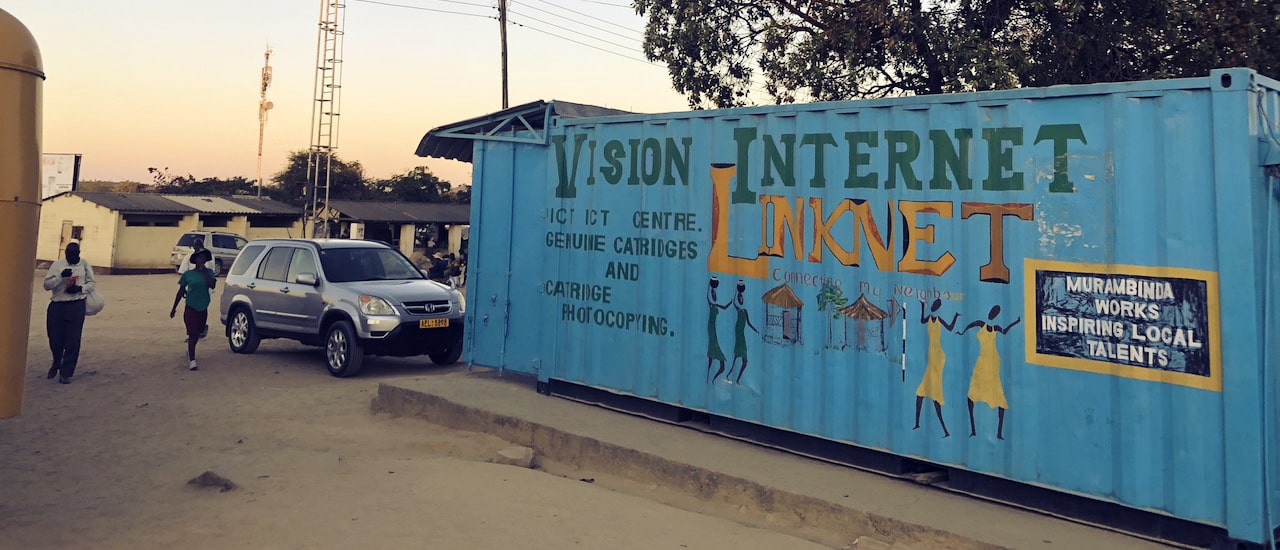Over 100 community members, including head masters, government officials, teachers and heads of primary and secondary schools gathered in Buhera rural district council of Zimbabwe on 15 November, eager to engage in discussions related to the initial deployment of the Murambinda Works Community Network. Schools, health and the local authority facilities have been earmarked as the initial benefactors for the inaugural roll out of the Murambinda Works Community Network.
The CEO of Murambinda, Mama Emilie gave a welcoming speech followed by the district school inspector of Buhera who talked about the importance of equipping their schools with ICT. “We cannot imagine a good curriculum that has not taken into consideration ICT. The partnership with Internet Society is a blessing to the district. We want to support it until infinity,” he said. The inspector also mentioned some of the challenges they are facing in their schools including the lack of power, unavailability of computers and connectivity. (Since 2015, 1200 teachers have been trained in ICT, but couldn’t do much with their acquired knowledge.)
TelONE, the national Telecommunications parastatal company with infrastructure in Murambinda Town, was also present at the workshop. “One man cannot make it but we can work together and get everyone connected,” the representative said, which gave everyone present hope that the Service Provider will also support the community network.
The board member of Murambinda Works noted that community networks are real projects that need the support of real leaders. He stressed for the need of a right mind set change as connectivity results of individual and community empowerment. “In community networks, no one must be left behind. The community must be part of the revolution,” he added.
A representative from the department of health also spoke about the advantages of being connected in a hospital. She gave the examples of how connectivity could promote the e-health system and the continuous professional education of doctors.
In his presentation about understanding community networks in Africa, Michuki Mwangi highlighted that the Internet is a network of networks and everyone should have access to it. “Africa still remains to be the least connected continent in the world. We need to connect the rural areas. The community needs to come together and build their own solutions to connect the unconnected.”
He also explained that community networks provide cheaper alternative connectivity compared to what is provided by mobile operators. Furthermore, access provided by community networks can be used to leverage education and employment opportunities while promoting innovation and creativity.
Solomon Kembo, president of the Internet Society Zimbabwe Chapter, also gave a short presentation on what the chapter is doing with regards to IoT and using Raspberry Pi as a cheap computing resource for education purposes. The participants who were largely teachers were very interested in the Raspberry Pi as an inexpensive alternative given that it can work off grid – as a low-powered device for the schools that are looking to build labs.
Murambinda Works initially started in early 2002, as an Internet café providing connectivity to the community. The café also offered printing and photocopying services in order to sustain the connectivity that was there. Later on, partnering with the Ministry of Education, Murambinda Works introduced a training on computer literacy aiming at building the capacity of teachers in ICT. The training was given across the entire district of Buhera covering close to 218 primary and secondary schools.
“After the training was given we began to receive requests for connectivity from the teachers of the various schools in the district. When people think of connectivity they think of Murambinda Works. So that is when the Internet Society came in,” said Joseph Bishi, member of Murambinda. Now, once the infrastructure for connectivity is all in place, the Murambinda Works Community Network will be connecting 8 schools, 1 nurse training school, and offices of the Ministry of Education as well as the local authority.
There is a lot of excitement and support from the authorities and members of the Buhera community towards the initial deployment of the Murambinda Works Community Network. Participants were able to see demonstrations of locally-developed solutions that offer use cases with great benefits for rural hospitals and schools. Remarkably, during the workshop, the district CEO approved a proposal for land to be donated to Murambinda Works to build a permanent facility for their network operations. This outcome was a clear indication of trust and intrinsic relations, with all the local stakeholders, and an important factor for success of the community network. Many left the community engagement workshop with a strong belief that connectivity indeed results in individual and community empowerment.
Community networks are for the community by the community, and the people of Buhera are ready to own their community network and support its growth as they go forward. In community networks, much of the work is human social engineering, hence the role of women is also seen as critical in this community.
“I thought that the Gombe mountain was important because it brought rain, but now I see that it is also important for bringing the Internet,” said the Chief of Gombe area in his closing speech. Gombe mountain is a high point 16 kilometers to Murambinda town and will host one of the main masts for the community network. The workshop closed with traditional blessings from the elders leaving everyone enthusiastic for the connectivity to come soon.
Community networks work! Become a part of the movement. #SwitchItOn

